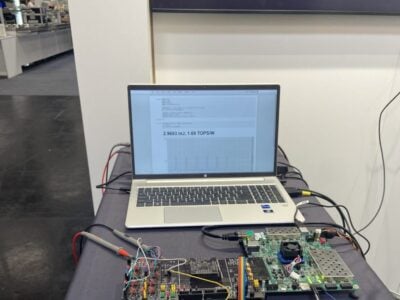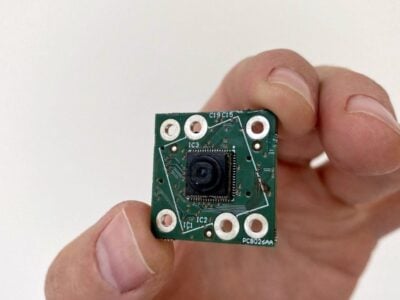
Surround haptics: a gamers’ dream?

eeNews Europe caught up with Büttner for an update on the company’s business plans, soon after the startup’s haptics engines had been demonstrated at CES, integrated in Razer’s HyperSense ecosystem and currently shipping in the OEM’s wireless PC gaming headset “Razer Nari Ultimate”.
Büttner was keen to remember the Basslet Kickstarter campaign, one of the top 5 most funded tech projects out of Germany, collecting just about 600,000 Euros in a month.
“Another milestone for the company was that we were able to ship all the products in the same year, within six months of ending up the Kickstarter campaign, to thousands of backers in 67 different countries. It is very rare for Kickstarter projects to ship on time” Büttner said.
“Money from the Kickstarter campaign helped grow the company, now our next stage of growth is to go into the B2B technology space. Basslet was more of a proof-of-concept to show our haptics engine in consumer devices, but immediately we knew it had many applications beyond wearables and headsets, so we approached tier-one mobile phone and gaming OEMs” the CEO explained.
“With Razer, we found a partner very eager to innovate and push the boundaries, it was a very fast process. We were able to integrate the core technology from Basslet into the Razer headphones. But going B2B, hardware is only one part of the solution, applications is what developers need and we went more into software. If you don’t drive the haptics in the proper way, you don’t get the adequate haptic experience” he continued.

According to Büttner whose background is in audio and music, to make it possible for any game developer to design their games and include the haptic experiences, the process should be as simple as creating sounds. For this purpose, Lofelt has developed signal processing algorithms that extract all the necessary information from the audio to drive the haptic signal in real-time.
“For content creators, it is very lean, practical and easy to implement. They already have the sounds in their libraries, they only need to pass the audio files through our DSP” the CEO explained.
Talking about latencies, Büttner said converting audio to haptics takes less than 5ms.

“The Razer Nari Ultimate headset has one haptic engine in each ear cup, in effect providing haptic stereo, so when you here an explosion or a gunshot in a game, you also feel localized haptics. Studies have shown that gamers’ reaction times are significantly faster with haptics, because your physical reaction time is faster (than hearing)”.
As Razer demonstrated during CES with its HyperSense prototypes, the next generation of PC peripherals could constitute an entire ecosystem where the chair, the mouse, the wrist rest pad or game controller and the headphones would provide together synchronized full-surround haptic feedback.
Büttner briefly mentioned other projects outside gaming, in the medical and the automotive fields (possibly embedded in the seat and the steering wheel). Smaller haptic engines could also find their place in tablets and smartphones, the CEO hopes.
“Our actuators feel different when integrated into lightweight devices, it may not be so much for recreating music but to add texture to user interfaces” he said. “The industry is still using the same vibration actuators since the 1994 Motorola pager and we notice how UI designers are frustrated with what’s available on the market”.
Now, piezoelectric actuators are promising too, but the CEO doesn’t see Lofelt as competing against other haptic solutions. “We have a very strong software focus, and technically, our software could drive piezo or electroactive polymers. The advantage of our voice-coil actuator is that it doesn’t require a high voltage”.
“What we have learned so far is that designing for high-fidelity haptics requires going far beyond simply manufacturing haptic actuators. It requires expertise and deep understanding of haptic perception, audio technology, hardware and software development, and physics – as well as rigorous user experience testing.”

demonstrated at CES.
“After a few years of improvement to increase power efficiency and power density, other companies may find ways to develop their own high-fidelity haptic actuators”, admits Büttner. But he sees this as a natural evolution in the good direction, as it will take more than one company to push high-fidelity haptics to the mass market.
Lofelt is now commercializing a modular evaluation kit that takes any standard stereo audio input and converts it to a rich haptic signal in real time, used to drive the actuator included in the kit.
Lofelt – https://lofelt.com
Related articles:
When haptics let you feel the music
Elevating Haptic Technology with Lofelt Wave
A magnetically levitated hammer for customizable haptics
 If you enjoyed this article, you will like the following ones: don't miss them by subscribing to :
eeNews on Google News
If you enjoyed this article, you will like the following ones: don't miss them by subscribing to :
eeNews on Google News



